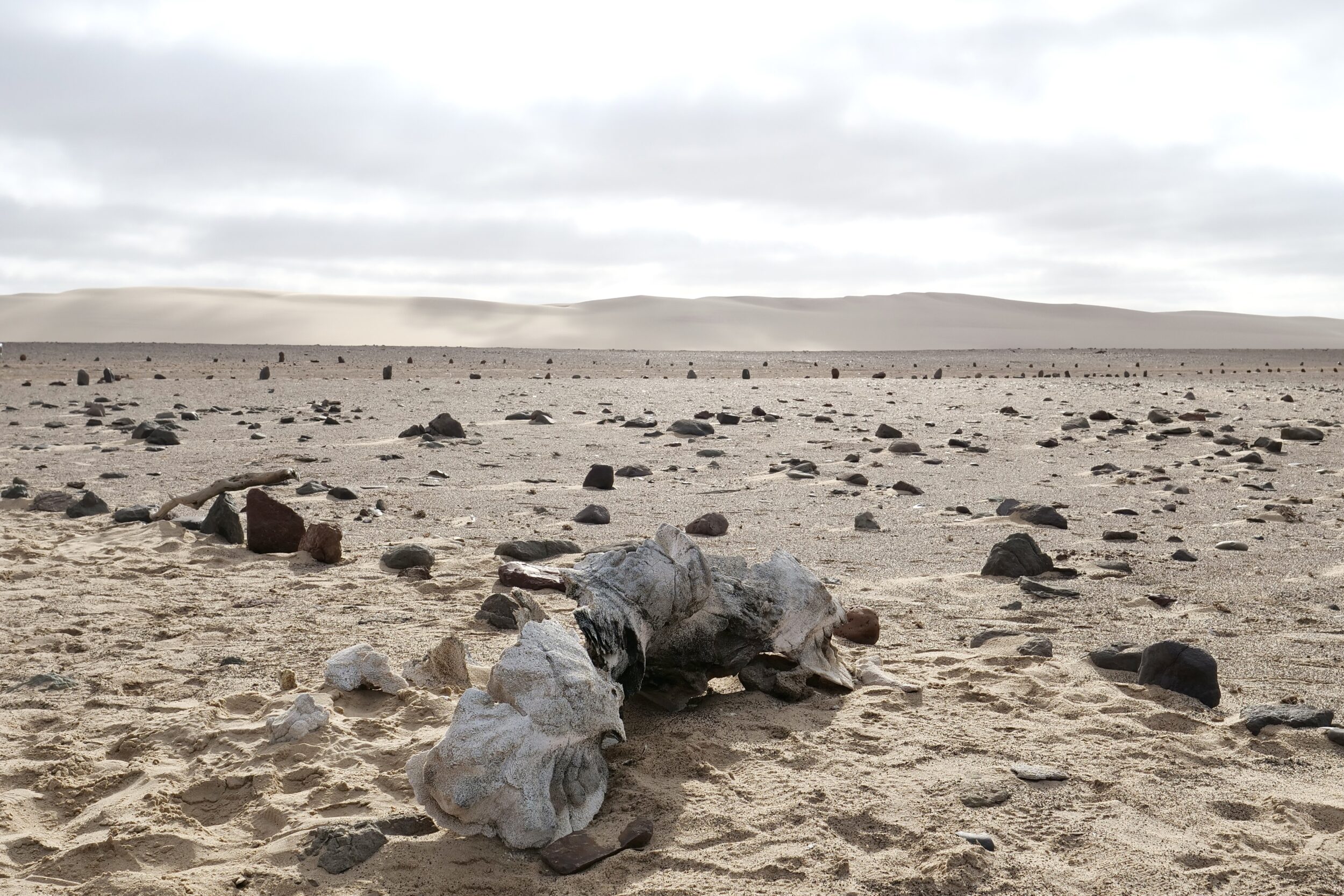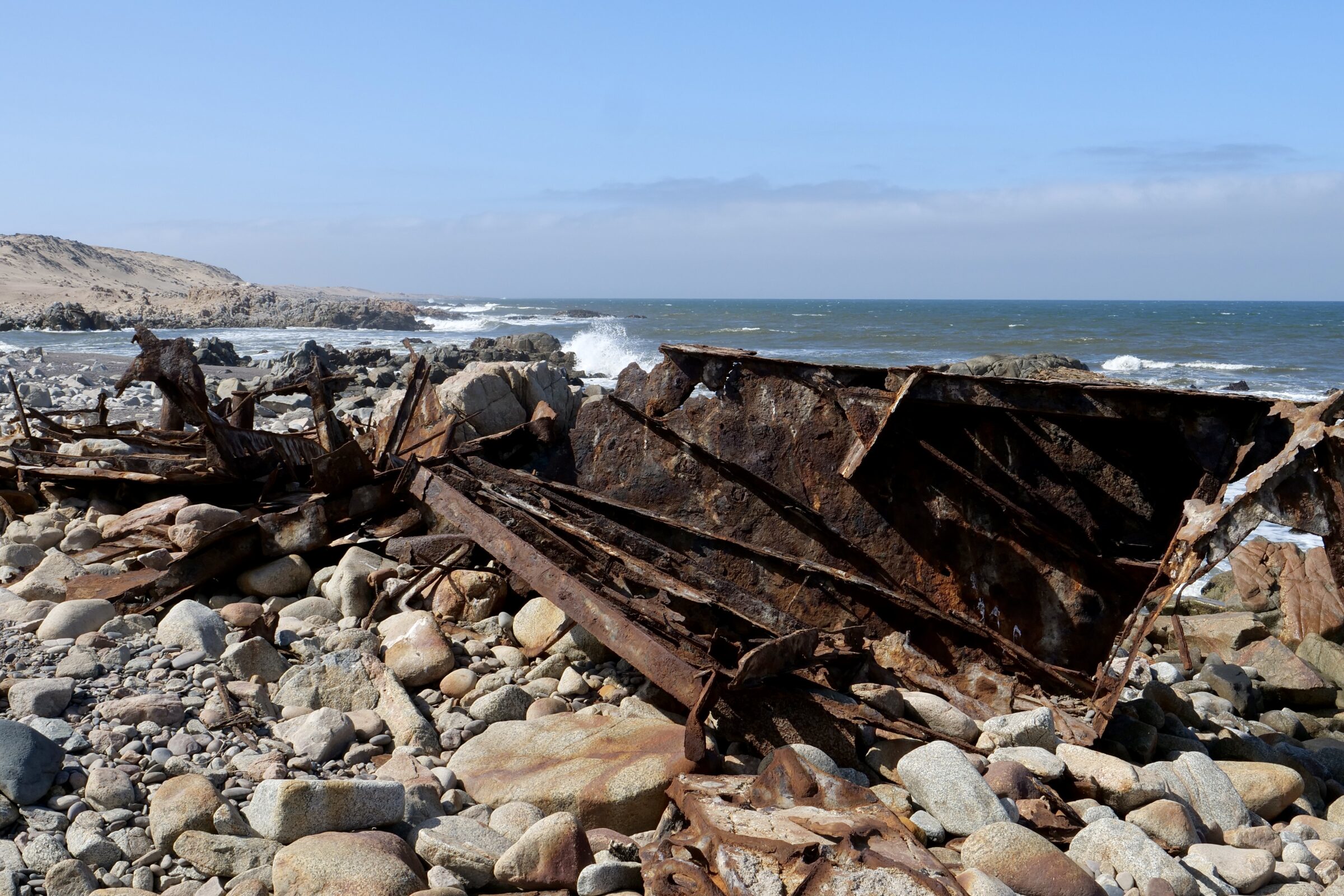Also starring a fine example of “sleepless rust”, this post’s featured image is much easier to “read” than was the immediately-preceding, teasing post’s.
Obviously, here, you are looking at a shipwreck.
No reliable figure is even possible, but it is generally reckoned that Namibia’s Skeleton Coast is the world’s largest “ships’ graveyard”.
At least several hundred vessels – quite possibly, more than one thousand – have succumbed to its “treacherous” mists, turbulent waters, “carnivorous” rocks.. and to its utter remoteness.
For several centuries, sailors who outlived their ship would, inevitably, soon share its fate – on a shore where rain hardly ever falls and no rivers permanently flow.
Until well into the 20th century this was a place no road reached, and where no humans lived.
Even so, whales have provided far more of the Skeleton Coast’s skeletons than have ships and sailors.
The featured photo was taken at 9.46 am on 15 November 2022 on the shoreline of Mowe Bay.
A little further north, circa 30 minutes earlier, the relevant “skeletal remains” were comprised, variously, of wood, and whalebone.
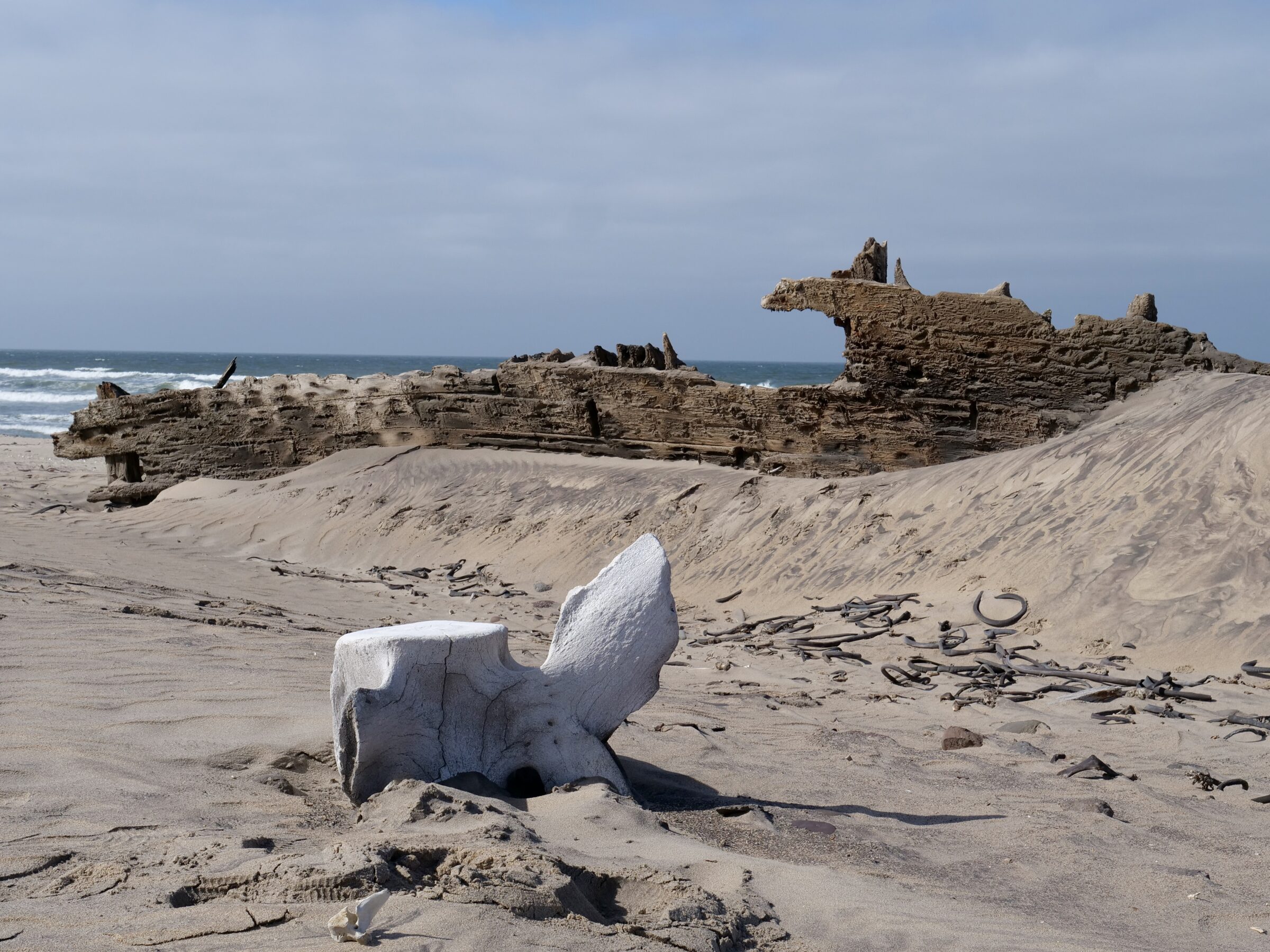
In such a vast and starkly spare landscape, the apparent size of any particular man-made, living, or once-living thing is radically variable, depending on one’s proximity/distance to it and one’s perspective on it.
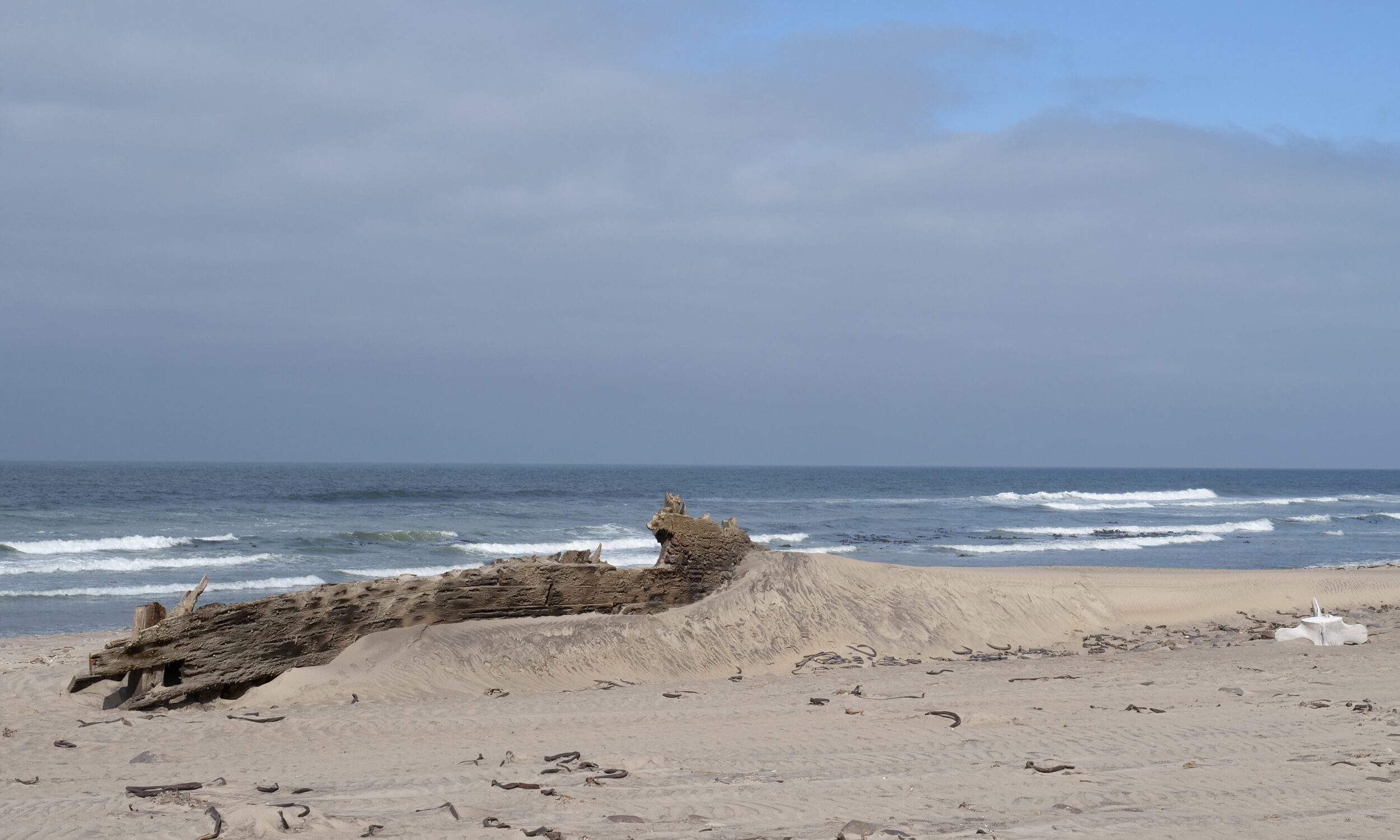
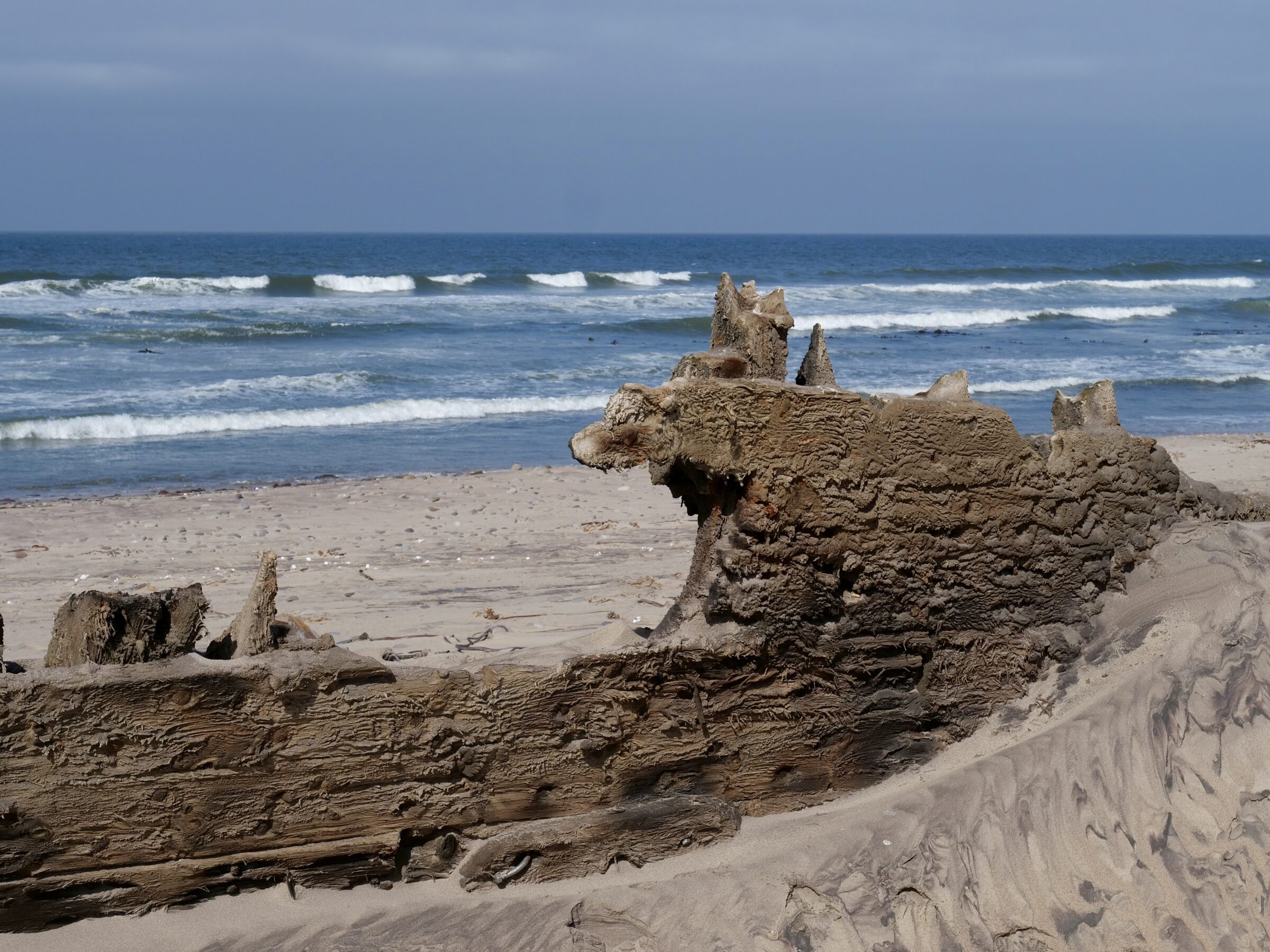
Many people used to apply the term “Skeleton Coast” to Namibia’s entire Atlantic shoreline, but since the proclamation of the Skeleton Coast National Park in 1971, “Skeleton Coast” usually means its/northwesternmost Namibia’s 500 kilometres of shoreline.
The photos above were taken on the morning of 15 November 2022, as we were heading back south on a “restricted” road, after an unforgettable stay at the truly singular Shipwreck Lodge.
This “ecotourism” venture sits within an even more astonishing natural environment…as you will see in several future posts.
On 13 November – en route to Shipwreck Lodge – the afternoon light was much harsher and flatter, so I took just the one photo as we drove by a former diamond mining site that had simply been abandoned when it became “uneconomic”.
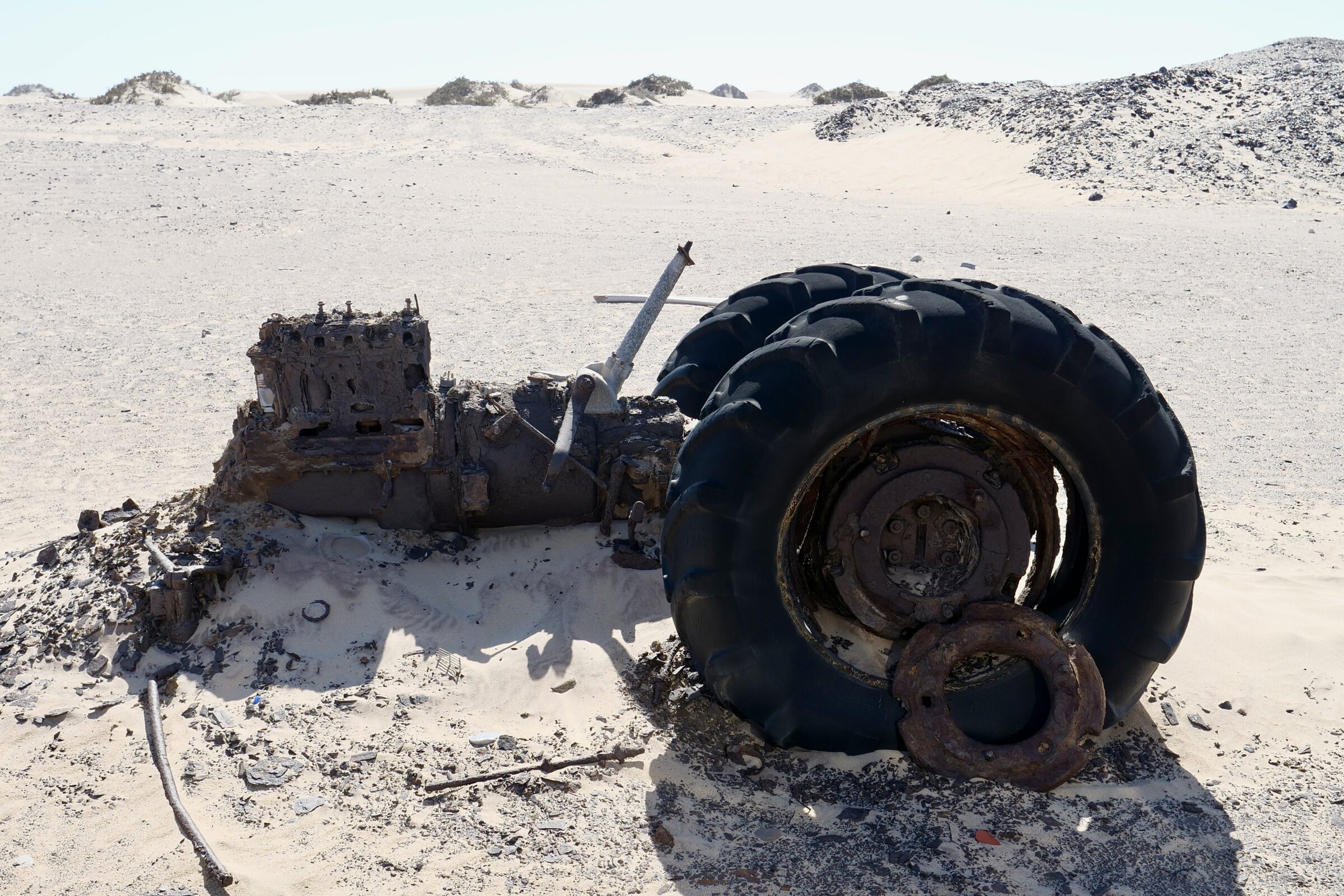
Because of its “vacuuming sand” method of diamond mining, little trace remains of the mine, other than a few inconveniently-heavy, sand-moving machines that once had diamonds on the soles of their tyres…or tracks.
The diamond-bearing sands had originally been carried by the Orange River, long before it marked Namibia’s southern border.
Later, the interaction of Atlantic Ocean and wind carried some of those sands – and a deal of their diamonds – north, along the Skeleton Coast.
(much of the Orange-carried sands became wind-delivered sands – a significant portion of what formed the Namib, the world’s oldest desert)
If you look closely at the 13 November photo above, you will know what I had photographed in the kinder light available on the morning of 15 November.
The teaser post’s photo and the one below both show what rust and time can do to an abandoned tractor’s engine.
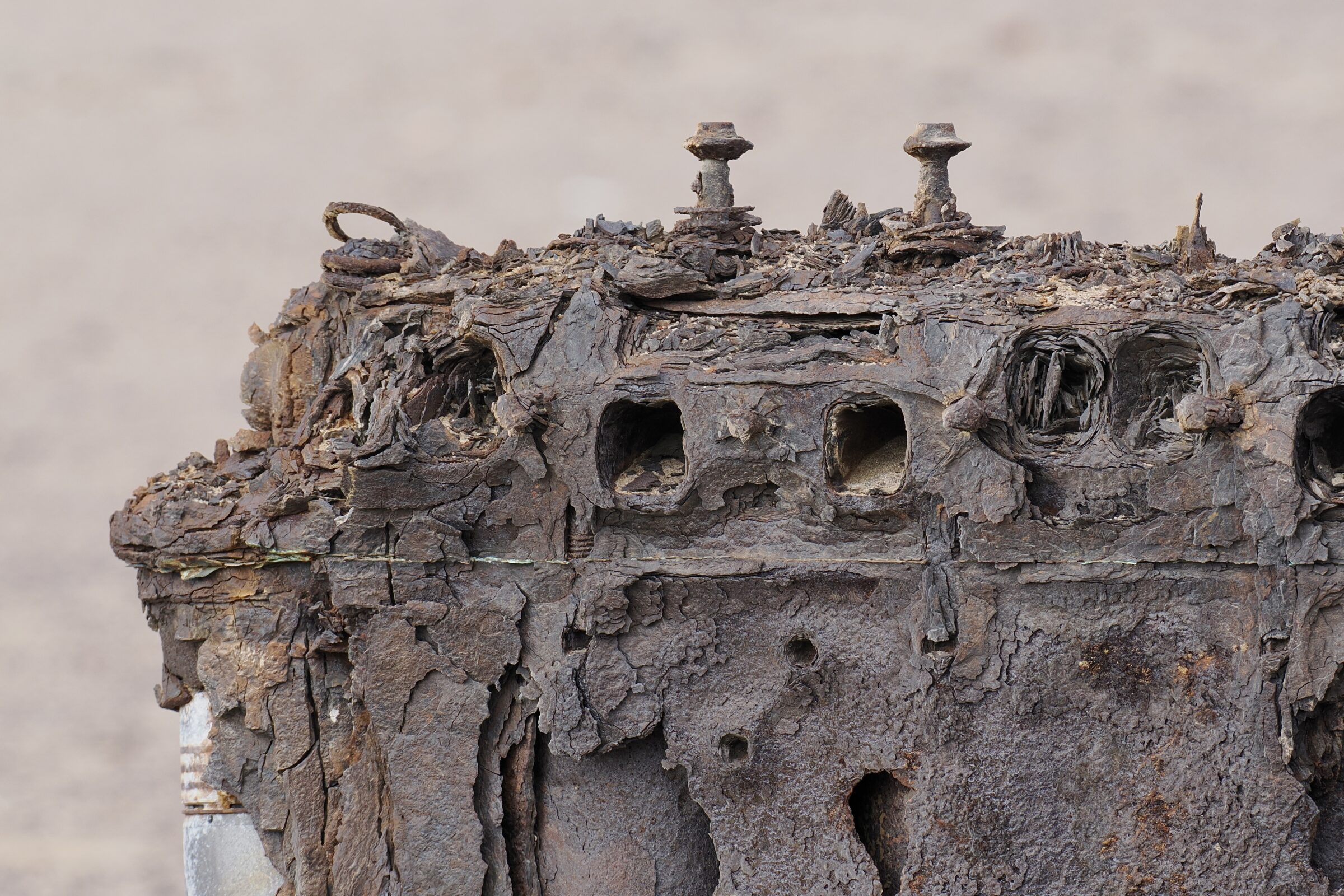
Standing nearby – for at least a few decades more, before it and desert become one – is a larger, tyreless, all-metal machine.
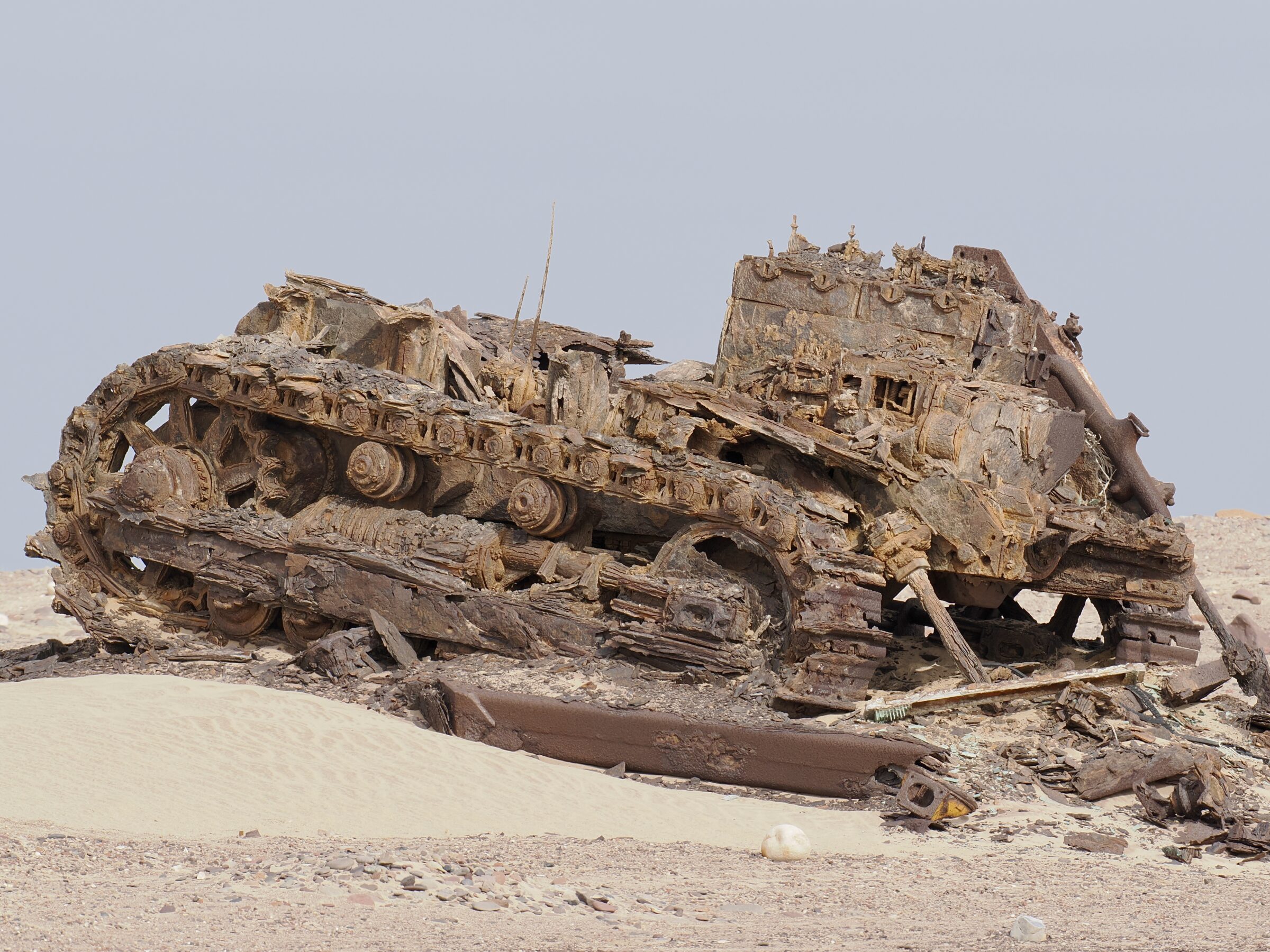
Fifteen minutes earlier, we had seen something even more “surreal” – something also man-made.
It is not part of a ship.
However, a little more than eighty years ago, it was part of one of the 20th century’s most amazing shipwreck stories.
It deserves a post of its own…coming up next on Pelican Yoga.
The photo below was taken just a few metres away from the relevant object.
